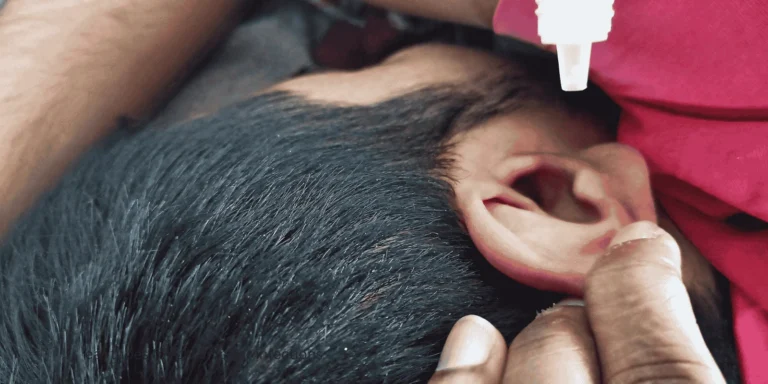Some kids sail through childhood with maybe one ear infection. Others seem to get them every few weeks. If your child falls into the second category, you’re probably frustrated and wondering why this keeps happening.
Several factors make some children prone to repeated ear infections, and understanding them helps with prevention and treatment decisions.
Immature Eustachian Tubes
The tubes connecting the middle ear to the back of the throat are shorter, narrower, and more horizontal in young children. This makes drainage difficult and allows bacteria to travel from the throat to the ear more easily.
Most children outgrow this anatomical disadvantage by age 5-7 as their heads grow and the tubes mature. That’s why ear infections become less common as kids get older.
But until that happens, their anatomy sets them up for repeated infections.
Daycare and Group Settings
Children in daycare get significantly more ear infections than those at home. They’re exposed to more viruses and bacteria from other kids.
Upper respiratory infections—colds—almost always precede ear infections. The congestion and inflammation from the cold block the eustachian tubes, creating perfect conditions for bacterial overgrowth in the middle ear.
I had a patient whose daughter started daycare at 18 months and immediately began getting ear infections every 3-4 weeks. Once she started kindergarten in a smaller class, the infections decreased dramatically.
Secondhand Smoke Exposure
Smoke irritates and inflames the eustachian tubes, making them more likely to swell shut. Children exposed to cigarette smoke get ear infections far more frequently than those in smoke-free homes.
Even outdoor smoking affects kids if smoke clings to clothes and hair. This is one of the most preventable risk factors.
Bottle Feeding Position
Babies who drink bottles while lying flat are at higher risk. Milk can flow into the eustachian tubes, causing irritation and increasing infection risk.
Hold babies at an angle during feeding, never completely horizontal. Don’t let babies take bottles to bed.
Breastfeeding offers some protection against ear infections, likely through antibodies in breast milk and the feeding position involved.
Allergies Contribute
Chronic nasal allergies cause persistent congestion and inflammation that blocks eustachian tube drainage. Treating underlying allergies often reduces ear infection frequency.
If your child has year-round stuffy nose, watery eyes, or other allergy symptoms along with frequent ear infections, addressing the allergies might break the infection cycle.
Pacifier Use After Age One
Studies show prolonged pacifier use beyond 12 months increases ear infection risk. The sucking motion affects eustachian tube function.
If your older baby or toddler still uses a pacifier constantly, limiting it to sleep times only might help.
Anatomical Abnormalities
Some children have structural problems like enlarged adenoids blocking the eustachian tube openings, cleft palate affecting tube function, or unusually small eustachian tubes.
These issues might require surgical intervention if infections are severe and frequent enough.
Family History
Genetics play a role. If parents had frequent ear infections as children, their kids are more likely to as well. You can’t change genetics, but knowing this helps set realistic expectations.
Breaking the Cycle
Through our telemedicine platform, I can assess your child’s infection pattern and identify contributing factors. Sometimes simple changes—reducing daycare days, eliminating smoke exposure, treating allergies—make a huge difference.
For children with persistent problems despite addressing modifiable factors, we discuss options like preventive antibiotics or referral for ear tubes.
Most children eventually outgrow this phase, but managing the underlying causes helps minimize infections until then.











